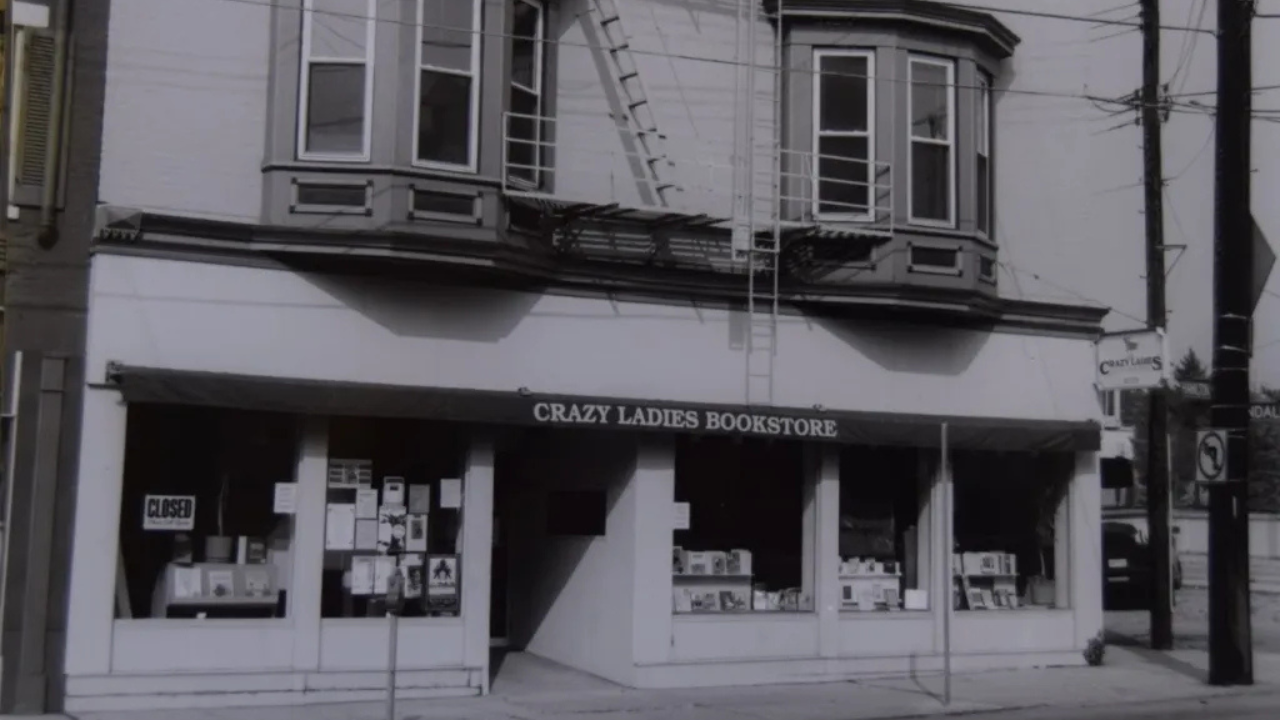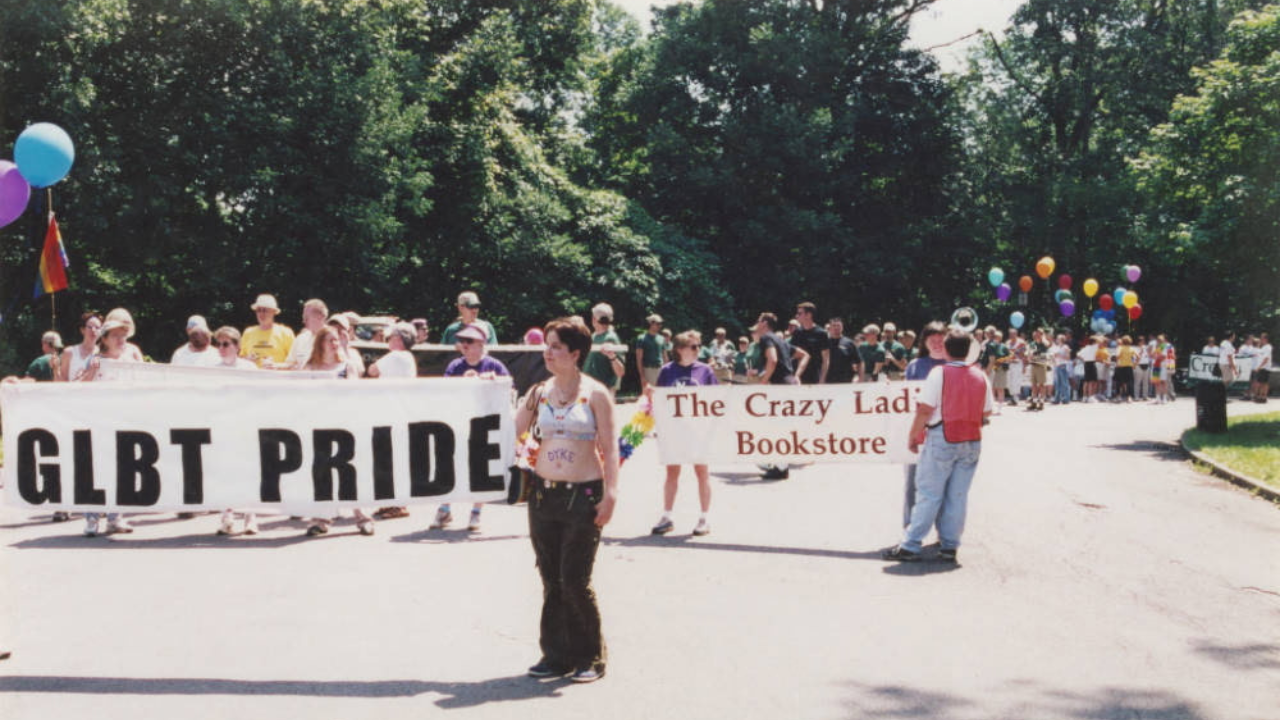COLUMBUS, Ohio (WCMH) — Historical markers honoring Akron’s LGBTQ+ enclave and a storied Cincinnati bookstore were nearing installation when the $250,000 Ohio grant funding the project was canceled by DOGE.
Ohio History Connection began developing the signs after receiving a $249,810 federal grant in 2022 to fund the Marking Diverse Ohio project, supporting the placement of 10 LGBTQ+ historical markers. Led by OHC’s Gay Ohio History Initiative, the project hit a roadblock on April 3 when the Elon Musk-led DOGE canceled the grant. Watch a previous NBC4 report on the canceled grant in the video player above.
Now, Marking Diverse Ohio advisors and researchers say they are evaluating other revenue sources to memorialize the following 10 people, places and organizations that the project was considering for a historical marker:
- South Howard Street, a historic Akron LGBTQ+ district.
- Crazy Ladies Center, a Cincinnati bookstore that housed the Ohio Lesbian Archives.
- Dr. Dolores Knoll, Kent State University’s first professor of gay and lesbian studies.
- Edmonia “Wildfire” Lewis, a 19th-century sculptor who attended Oberlin College.
- LGBTQ+ journalism in Ohio.
- Louis P. Escobar, Toledo City Council’s first LGBTQ+ member.
- Nightsweats & T-Cells, a Lakewood screen-printing company benefiting Ohioans living with HIV.
- Pater Noster House, a former Columbus hospice and care center for HIV patients.
- Rev. Jan Griesinger, an openly-lesbian pastor and Athens community activist.
- The Rubi Girls, a Dayton drag group that formed in the 1980s.
One project advisor enlisted by OHC was Tony Pankuch, the education and outreach coordinator for the University of Akron’s Cummings Center for the History of Psychology. Pankuch was aiding in research for a marker honoring South Howard Street, an Akron neighborhood home to several LGBTQ+ bars beginning in the late 1940s.
Along with serving as an enclave for Akron’s LGBTQ+ community, South Howard “shared a history of marginalization” with North Howard Street, a nearby hub for the Black community, Pankuch explained. However, urban renewal plans by Akron city government in the 1960s increased policing in both districts, leading to bar raids in the same vein as Manhattan’s Stonewall Uprising. By 1967, the areas were labeled blighted by local officials and faced bulldozers.
Pankuch said the research team was working with city government to install a sign honoring this history by the end of 2025, possibly before Akron’s Pride festival in August. While it was “a steamroller” to find out the grant had been canceled, Pankuch said they and other project advisors are examining how to bring the marker to life through community fundraising.
“It’s important to establish that Akron did have its own LGBTQ culture dating back 80 years at this point… I think it’s really important that we acknowledge that LGBTQ people have been in this city,” Pankuch said. “There’s no question that this story is significant enough to go on a historical marker.”
Nancy Yerian, the president of the Ohio Lesbian Archives, was another advisor recruited by OHC for a marker honoring Crazy Ladies Bookstore in Cincinnati. The storefront, which opened in 1979 before moving into a three-story building in 1989, operated as a feminist bookstore that quickly became a safe haven for community members.
The store remained open until 2002 and housed a series of support groups, organizations, and the first physical iteration of the Ohio Lesbian Archives, now located at 1308 Race St. in Cincinnati. Yerian said the archives were part of a larger movement in the 90s, when community members began documenting their history given the lack of access to lesbian stories.
The bookstore’s marker was nearing the finish line and the research team was working with Cincinnati’s park division to install it possibly this summer or fall, Yerian said. Still, like the effort behind South Howard’s marker, the archives president said the sign could still come to fruition.
“Organizations have really been making an effort in the past decade or two to include LGBTQ stories, and obviously the cuts are a huge setback for public history in general, but also for any efforts at including diverse perspectives,” said Yerian. “At this point in time, in 2025, unfortunately I wasn’t too surprised, but I was deeply saddened.”
Installation of these signs would add to Ohio’s small collection of markers honoring LGBTQ+ history. Out of the more than 1,800 markers placed across the state, only three are related to the LGBTQ+ community. OHC most recently installed a sign in June 2023 honoring Summit Station, one of the first lesbian pubs in the nation that welcomed patrons for nearly four decades before closing in 2008.
The state’s first LGBTQ+ marker was installed near the Dayton Metro Library in 2009 to commemorate Ohio-born Natalie Clifford Barney, a lesbian writer who hosted a literary salon in Paris. In 2017, the second was placed on West 28th Street in Cleveland to honor the LGBT civil rights movement near the site of the Lesbian-Gay Community Service Center.
OHC’s grant was among $25 million worth of funds awarded by the Institute of Museum and Library Services that have been cut by DOGE. Musk’s department also recently slashed an Ohio State professor’s nearly $700,000 grant that was studying the link between cannabis use disorder and LGBTQ+ women.
“We are seeing pretty consistent, widespread efforts to erase LGBTQ identity from both modern society and the historic record, and I think the goal of this is just to make LGBTQ seem new, threatening, upsetting to the status quo,” said Pankuch. “No matter how people feel about the LGBTQ community specifically, the fact of the matter is that we are citizens of this country, we’re part of the history of the U.S.”














